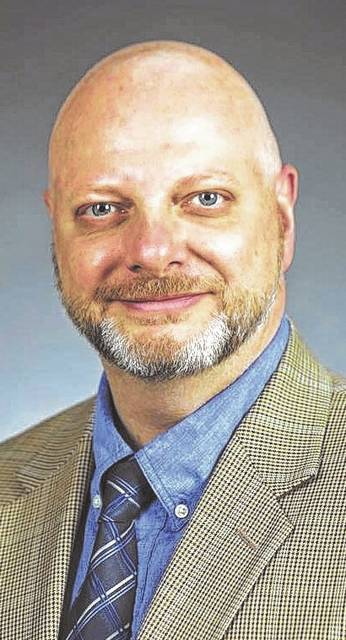My intention this month was to talk about monsters — vampires in particular.
Givens Performing Arts Center was planning to premier an original new musical titled “Comte Dracula,” but because of unfortunate circumstances that show was changed and a new one put in its place. But I was left with a olumn to write, and as fate would have it, new monsters rolled into North Carolina on Sept. 14 and Oct. 11 and trumped the fictional vampire. This monsters were real, and although their names — Florence and Michael — sounded unassuming, they will live in our nightmares for a long time.
Much already has been said about the devastation Hurricane Florence left in her wake — destroyed homes and businesses, ruined property, and damaged lives — all of which will take time to recover from. But the damage done by catastrophes is not always visible — at least not immediately. The effects of this storm were deep. Michael, while less vicious, delivered strong winds and increased anxiety.
One of the more obvious victims of long-term damage were the students of Robeson County, who only this week were given the green light to return to their schools. Weeks of no classes may not seem like a big deal, but lost instruction time is a detriment, especially in a county that already has experienced countless educational challenges.
Local arts programs felt the monster’s bite, too. Two performing arts organizations — The Carolina Civic Center in Lumberton and Givens Performing Arts Center on the campus of The University of North Carolina at Pembroke — were forced to reschedule their opening season performances. The Civic Center’s “Masters of Soul” now will take the stage in January and GPAC’s “The Three Musketeers” will be performed in November.
Aside from a rescheduled program, the Carolina Civic Center also sustained damage. The roof cap over the beautiful chandelier in the theatre blew off during the storm and some rain damage occurred inside. Rich Sceiford, the theatre’s director, said the repairs were in order and the season would move on.
“We are really blessed with very loyal audiences who come from near and far and who view the 1928 building as a personality of its own. We know they will want the theater to return to normal as soon as possible,” Sceiford said.
But, he added that it wasn’t quite that easy.
“The biggest issue is that [Florence] delayed starting rehearsals for our annual ‘A Robeson County Christmas’ show, so we have to double down to catch up with that,” he said. “It’s a big show with a large cast and it always sells out, so we have to meet the challenge.”
A visit from the phantom of the opera might have been preferred as far as monsters go.
The monsters’ reach was far and wide. East Carolina University’s Arts Smart series serves elementary schools in an 11-county region, providing many students with their first professional live performances. Michael Crane, associate dean in the College of Fine Arts and Communication, said many of those students, while resuming school, would not have time for trips off campus to attend the shows.
The Paramount Theater in Burlington lost a week of production because of Florence, which resulted in lost rental income. But, according to Managing Director Dave Wright, the shows quickly were rescheduled to include new dates.
“We count that as a win for The Paramount,” he said.
So while the monster, Florence, caused damage and hurt plans, there was a silver lining — one of resilience. Many arts organizations rescheduled their events and many held fundraisers to help others get back on their feet. This time the monster didn’t get to win.
You see, the threat of real monsters like hurricanes Florence and Michael isn’t just their immediate impact. It’s the lingering effects that erode economic gains for communities.
David Briggs, with High Point Theatre, noted that while they did not suffer much damage, they still had to postpone performances.
“One thing I did notice is that even if the weather wasn’t a direct issue for people, they were wary of venturing out just before and until nearly a week afterward,” he said.
Again, there is a silver lining. One of the things that down economies and tragedies have shown us is that the arts are resilient. The arts are sometimes an escape from reality and they have the potential to help bolster economies because they bring revenue from areas outside of their local communities.
Tim Stevens is the president of Show N Tell, who created the show “Broadway Voices” out of Garner. Their group raised $56,000 for hurricane relief in 2016 and they have a benefit show scheduled this weekend in Raleigh.
In 2017, the Americans For The Arts released its Arts and Economic Prosperity study. The study showed that in 2015 tourists and visitors contributed more than $340,000 to Robeson County’s economy. That money went to restaurants, hotels, transportation, refreshments and souvenirs. Among the respondents of the survey, nearly 85 percent said they specifically came to Robeson County for arts and culturally related events and would go elsewhere if they couldn’t find what they desired.
As Robeson County and North Carolina continue to shake off the nightmares that were hurricanes Florence and Michael, there is solace in knowing that the arts can contribute in some small way to recovering. So, now that the monsters are gone, and as the debris is being swept away, structures begin to be rebuilt and fresh rain washes away the mud stains and water marks, consider supporting arts events as a way to help our community try to become whole again.
Let’s hope the monsters never return.









